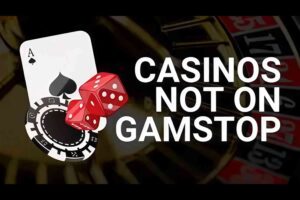When people talk about epic motorcycle adventures, Vietnam almost always comes up—and for good reason. This long, narrow country is packed with jungle-covered mountains, coastal highways, remote villages, and lively cities. Whether you’re a solo backpacker, an experienced rider, or just looking for your next unforgettable journey, a motorcycle tour in Vietnam delivers that rare mix of adventure, culture, and freedom.
In this article, I’ll share personal insights, practical tips, and real routes to help you figure out if Vietnam should be your next two-wheeled destination.
What Makes Riding in Vietnam So Unique?
The Freedom to Explore
Unlike many countries where riding off the beaten track is difficult, Vietnam almost invites it. Tiny side roads lead to rice fields, waterfalls, and villages untouched by tourism. One moment, you’re weaving through Hanoi’s chaos; the next, you’re surrounded by misty mountains with water buffalo grazing beside the road.
The Culture and Connection
Vietnamese hospitality is famous. Locals wave, kids shout hello, and roadside café owners might refuse payment just to share a laugh and a coffee. On a motorcycle, you’re not separated from the world—you’re immersed in it.
The Changing Landscapes
In one week, you can ride from the tropical Mekong Delta, through ancient towns like Hoi An, climb into the misty mountains of Da Lat, and finish on the fog-draped loops of Ha Giang in the far north. Few countries offer so much variety in such a compact space.
What Are the Best Routes for a Motorcycle Tour in Vietnam?
The Ha Giang Loop (North)
Often called the holy grail of Vietnam motorcycle tours. It’s 300–400 km of switchbacks, karst mountains, ethnic minority villages, and breathtaking cliffs. Best done in 3–5 days from Ha Giang City.
Tip: A permit from the local police is required for foreign travelers—easy to get from your hotel.
Ho Chi Minh Road (Central to North)
Less crowded than Highway 1, this historic trail winds through jungle-covered hills, rural towns, and war sites. Stretch from Hue to Phong Nha (a national park with massive caves) is particularly stunning.
The Hai Van Pass
Made famous by Top Gear, this 21 km coastal road near Da Nang combines smooth curves with sea views and historical bunkers. It’s short but sweet and a must-ride if you’re in Central Vietnam.
The Southern Highlands (Da Lat to Mui Ne)
Cool mountain air, pine forests, and coffee plantations give this ride a European feel. Stop for waterfalls, strawberry farms, and curvy roads without the heat and humidity of the lowlands.
Full North-to-South (or vice versa)
Many long-term travelers ride from Hanoi to Ho Chi Minh City or the other way around, covering 1,500–2,000 km in 2–4 weeks. You’ll see everything from chaotic cities to untouched villages.
Should You Rent or Buy a Bike in Vietnam?
Renting
Pros: Hassle-free, maintenance handled, newer bikes available
Cons: Higher daily cost, limited long-distance flexibility
Cost: $10–20/day for a semi-auto or manual bike like the Honda XR150 or Yamaha Exciter.
Where: Reputable rental shops in Hanoi, Ho Chi Minh City, and Da Nang.
Buying
Pros: Cheaper for long trips, easier resale, more freedom
Cons: You handle repairs, paperwork (minimal), and reselling at the end
Cost: $250–500 for used semi-autos like the Honda Win or Wave.
Tip: Facebook groups like “Vietnam Backpacker Motorbike Market” are great for buying/selling.
What Gear and Paperwork Do You Need?
Paperwork
Driver’s License: Technically, you need a Vietnamese or International Driving Permit (IDP). Enforcement varies, but it’s safest to carry one.
Travel Insurance: Make sure it covers motorbiking. Many policies exclude riding unless you’re licensed.
Bike Documents: If you own the bike, keep the blue ownership card (Giấy đăng ký xe).
Gear
Helmet: Bring your own if safety matters—local ones are often low quality.
Rain Gear: Vietnam’s weather changes fast. A poncho or rain suit is essential.
Gloves & Jacket: Protect yourself even if it’s hot.
Bungee Cords / Straps: For securing backpacks or gear.
Phone Mount + Offline Maps: Google Maps, Maps.me, and OsmAnd are your best friends.
When’s the Best Time for a Motorcycle Tour in Vietnam?
Vietnam spans several climate zones. There’s no single perfect time, but here’s a breakdown:
North Vietnam (e.g., Ha Giang, Hanoi): March–May or September–November. Avoid winter fog and summer rains.
Central Vietnam (e.g., Da Nang, Hue): February–August is ideal. Avoid storms in October–November.
South Vietnam (e.g., HCMC, Mekong): Dry from December to April; wet season is June–October.
Tip: Avoid the Tet holiday (Vietnamese New Year, usually in late January or February)—cities shut down, and prices spike.
Is It Safe to Ride in Vietnam?
Yes, with the right mindset and caution. Here’s what you should know:
Traffic: Chaotic but surprisingly fluid. The key is to go with the flow and ride predictably.
Road Conditions: Vary wildly. Main highways are decent, but rural roads may have potholes, livestock, or loose gravel.
Police: Not usually an issue. If stopped, stay polite. A small on-the-spot fine ($10–20) can sometimes resolve minor issues.
Breakdowns: Mechanics (xe máy repair shops) are everywhere. Most bikes are easy to fix.
Medical Care: Good hospitals in major cities. Travel insurance with evacuation coverage is recommended.
What Surprises Most Riders About Touring Vietnam?
The Friendliness
One rider told me he got a flat near Sapa, and within minutes, a farmer brought tools, helped fix it, and invited him for a meal with the family. Stories like that are common.
The Food
Vietnamese cuisine varies by region and is incredibly affordable. Think roadside phở, fresh bánh mì, sizzling cơm tấm, and endless cups of strong, sweet coffee.
The Cost
A full-day ride, meals, fuel, and lodging can cost less than $30. It’s one of the most budget-friendly motorcycle destinations on Earth.
The Connection
Riding a motorcycle in Vietnam doesn’t just show you the country—it connects you to it. You feel the rain, the wind, the smells of street food and farmland. That intimacy stays with you.
How Can You Plan the Ideal Motorcycle Tour in Vietnam?
Plan Lightly: Know your general route, but stay flexible. The best experiences come unplanned.
Pace Yourself: Don’t try to ride every day. Take time to rest, explore towns, and enjoy the journey.
Join or Go Solo: Solo riding is rewarding, but many hostels organize group tours for beginners or short trips.
Pack Smart: Bring less than you think you need—you’ll buy things along the way.
Final Thoughts: Is a Motorcycle Tour in Vietnam Worth It?
Absolutely.
If you’re looking for a real adventure—not the polished, packaged kind—then a motorcycle tour in Vietnam is one of the best decisions you can make. The country is ready to welcome you with open arms, curvy roads, and bowls of hot noodle soup at every stop.
You don’t need to be a pro biker or fluent in Vietnamese. Just bring a curious spirit, a little common sense, and a willingness to follow the road wherever it leads.





